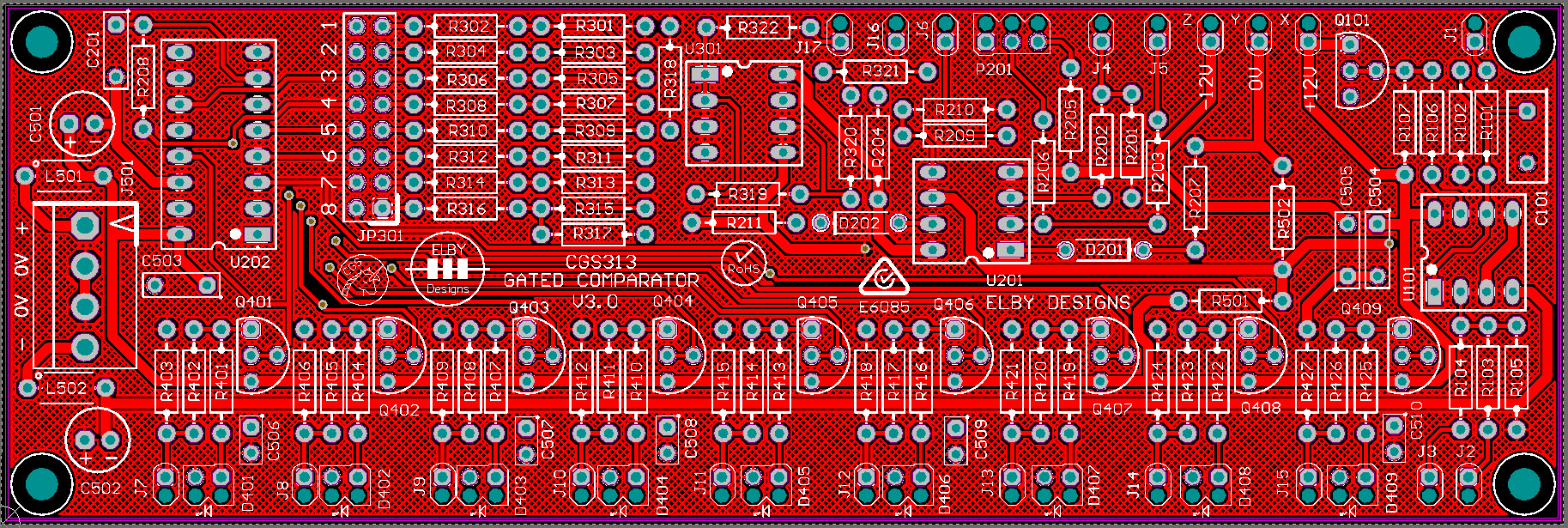
3D Model
The idea for this project came when Ken was listening to some music in which part of the background was jumping between octaves in a semi-random fashion. Feeding noise into a comparator was my immediate thought, but he soon realized this wasn't going achieve what he wanted. Ken needed to be able to control when these jumps could occur. As such, some form of memory element was required, into which the level could be clocked when required.
Ken has used an 8 stage digital shift register as the memory element. Each clock pulse, the remembered level (logic 0 or logic 1) is moved into the next stage "bucket brigade" fashion, and the new value stored in the first memory cell. The result is a random level (on or off) at a predetermined time at the first output, plus time delayed versions of previous levels across the remaining outputs.
As well as the 8 shifted gate outputs available, the raw comparator output is also available. The status of each of the outputs is displayed by a LED, making adjusting the unit so much easier.
There is also a secondary voltage control input so the comparator break/reference point can be varied by an external control voltage. On top of all this, there is a D/A converted connected to the outputs of the shift register, with the last 4 bits capable of being switched in or out. This gives some great little melodies or sequences. They will depend largely on what is fed into the shift register, though due to the configuration will always have a certain flavor.
There is an inverted output for this as well. When the resultant voltage is fed to a VCO, effects from subtle semi-random melodies to 70s sci-fi computer sounds can be generated.
The later version adds a 'LOOP' input so that several gated comparators can be cascaded together, or its own output can be fed back into its input. Other digital sources could also be used. This new "digital" input is OR gated with the original "analog" input, so keep this in mind when patching. It is quite possible to rapidly set all stages in a loop to HIGH, in which case there will be no further activity on the outputs.
The BoCGS SWAMP uses the Gated Comparator and incorporates a Klee-type sequencer using the CGS304 DC Mixer.

CGS13 Tutorial By Nicholas Peck At 'Under The Big Tree'